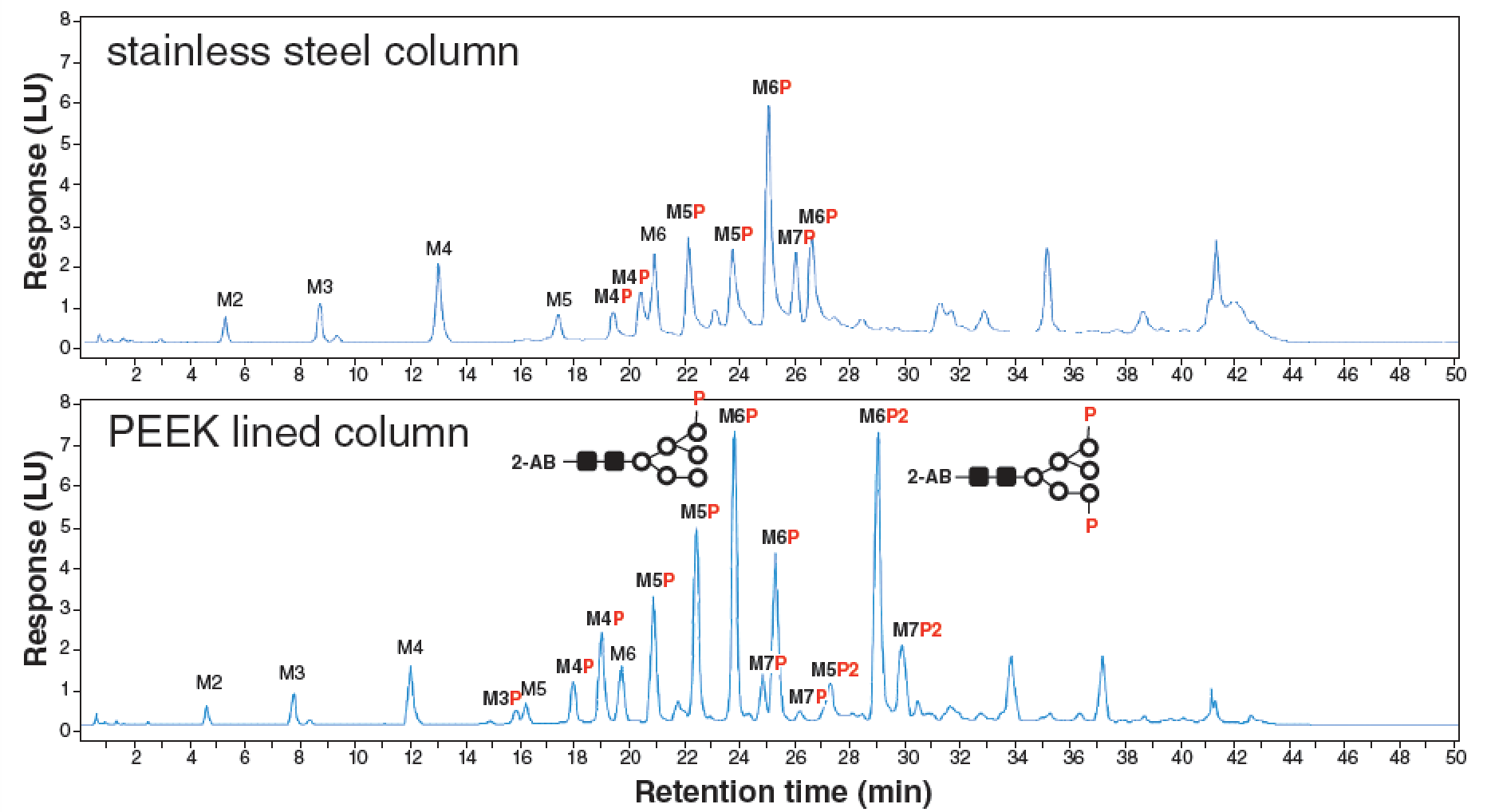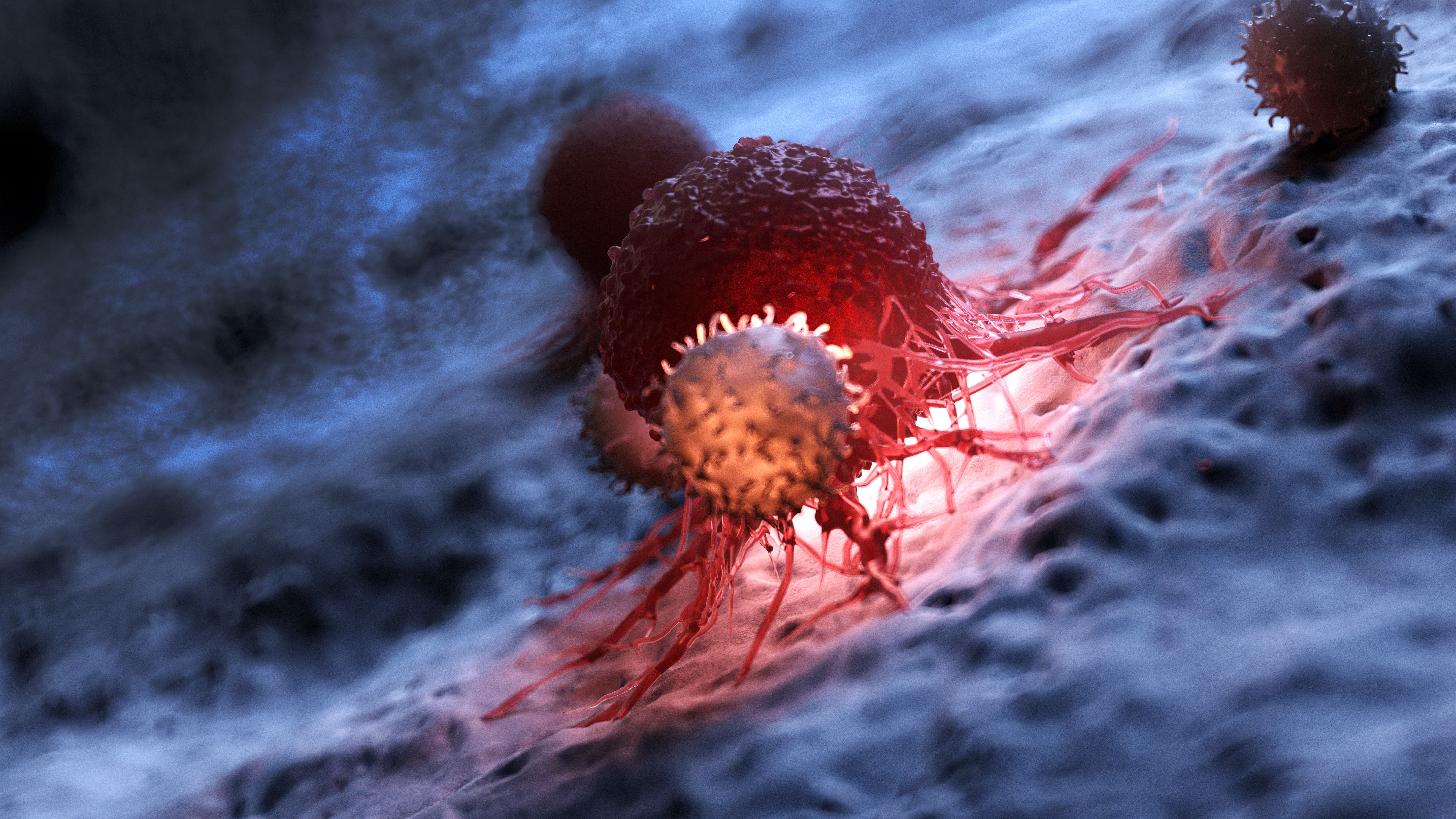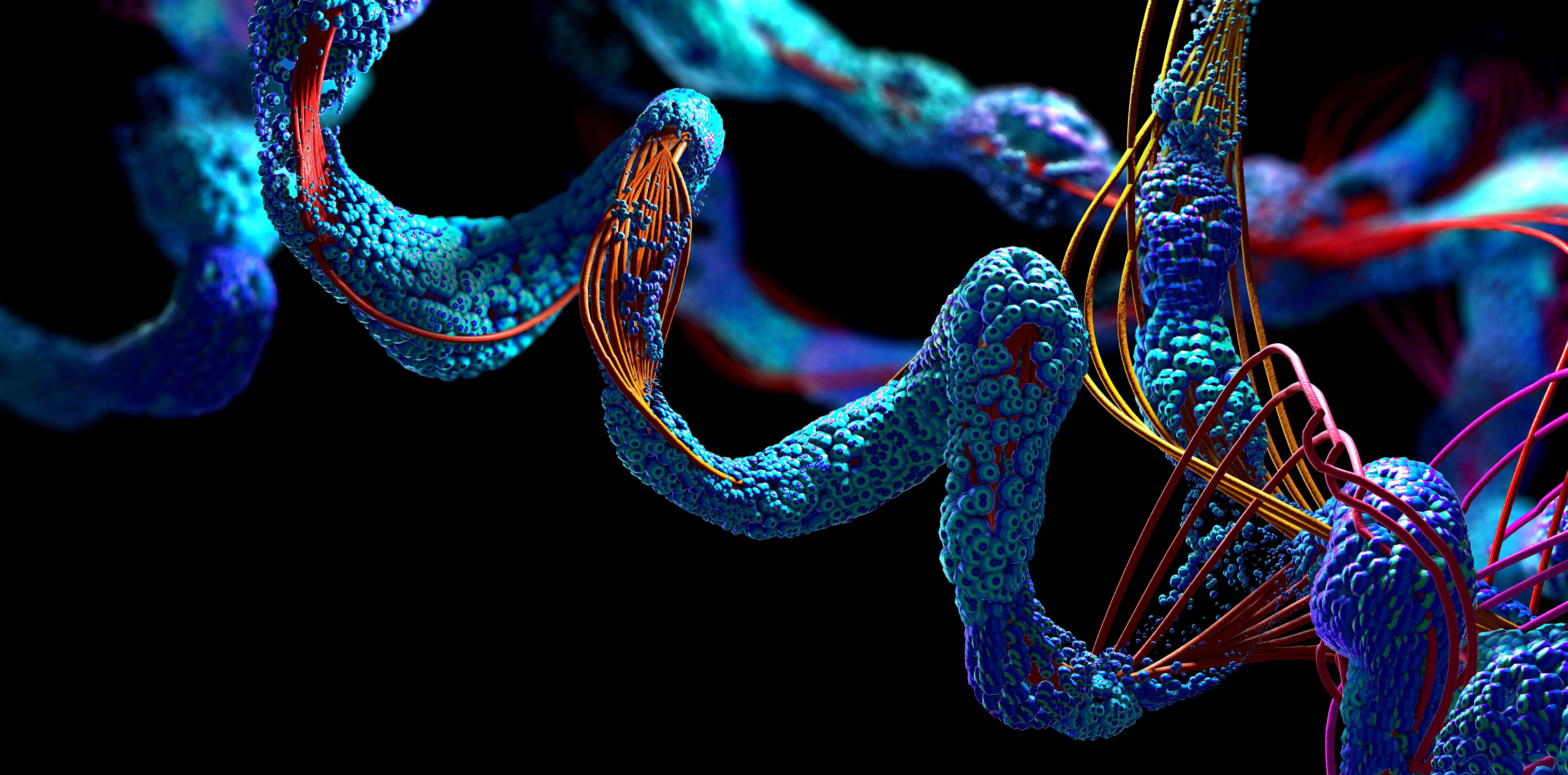
Biopharmaceuticals and Protein Analysis
Latest News


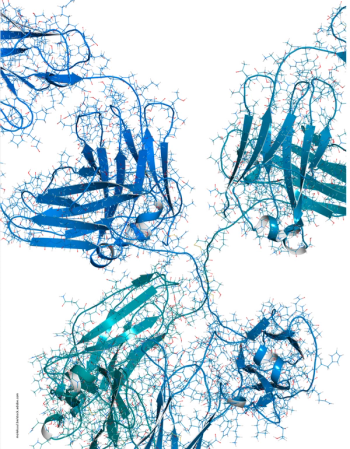
The benefits of a robustness assessment for the analysis of a NIST mAb using a wide pore C4 LC column are described.
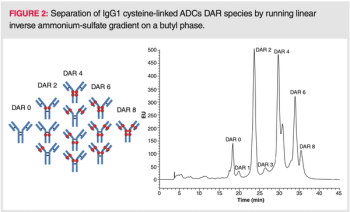
In the second part of this review of the current state of HIC, some practical considerations are explained, including method development, selection of the phase system, combined salt systems, and possibilities to combine HIC with other chromatographic modes.

A review of the current state of HIC, focusing on retention and separation mechanisms with the aim of developing more robust methods. Can HIC be considered as a non-denaturing and non-destructive technique with advantages for protein analysis?

Recent advances in stationary phases for hydrophobic interaction chromatography (HIC) permit HIC–MS analysis of intact antibodies and other proteins using direct flow to the mass spectrometer.

New analytical workflows are needed to address the advances in biopharmaceutical product composition. A description of the multi-attribute method (MAM) is given, which has been developed to monitor critical quality attributes (CQAs) simultaneously and directly.

Recombinant adeno-associated viral therapy (rAAV) products are particularly complex. Are liquid chromatography and LC–MS the right tools for their characterization?

IMS is a valuable tool for biopharmaceutical analysis. Two formats in particular have proven useful: cyclic IMS and structures for lossless manipulations (SLIM).

This article explores the potential of microchip capillary electrophoresis–mass spectrometry (CE–MS) for the characterization of intact biopharmaceuticals, and how this technique can effectively be employed to monitor essential quality attributes of interest.

This article explores the analytical challenges associated with HCP monitoring and reviews recent advances in HCP characterization, with special emphasis on high performance liquid chromatography mass spectrometry (HPLC–MS)-based methods and HCP enrichment techniques.
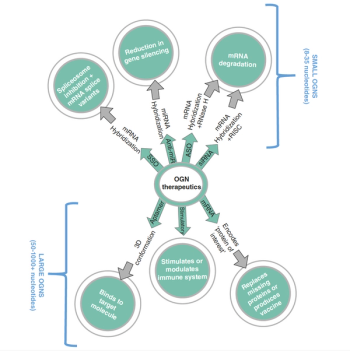
The diverse nature of oligonucleotide therapeutics leads to the requirement for multiple separation methods to characterize quality attributes. Highly chemically-modified to improve efficacy and resilience to nucleases, they are challenging to analyse using a single method. This article discusses multiple chromatographic separation methods, and the benefits of mass spectrometry (MS).

Cellular and gene therapies (CGTs) have contributed significantly to the improvement of clinical outcomes for patients in the recent years. This paper discusses a range of physicochemical methods that play an important role in the difficult characterization of viral vectors, to meet the unique needs of CGT manufacturing process development, process and product characterization, and the quality control testing of these materials.

In this paper, two adeno-associated virus (AAV) genome integrity analysis workflows are introduced; a standard sample preparation protocol and an accelerated procedure, both utilizing capillary gel electrophoresis with laser induced fluorescent detection (CGE–LIF) to analyze the released nucleic acids.

If you are analyzing metal-sensitive biomolecules, and a bioinert instrument is unavailable, or insufficient, passivation or mobile-phase additives may help. Here’s how to use those solutions, with tips for avoiding potential pitfalls.

The strategies described here can improve the efficiency and analyte recovery of chromatographic methods used to characterize monoclonal antibodies and antibody– drug conjugates.

Filip Cuyckens from Janssen R&D in Belgium spoke to LCGC Europe about recent innovative approaches he and his team developed to support drug metabolism and pharmacokinetic studies, and the inventive role that two-dimensional liquid chromatography (2D-LC) plays in his laboratory to boost sensitivity, solve recovery issues, and increase overall efficiency.
![[1]L1593120170948.jpg](https://cdn.sanity.io/images/0vv8moc6/chroma/77f8f859bb7a2582ccded7f5dd0b4cc0efde35c1-500x137.jpg?w=350&fit=crop&auto=format)
Single-column (batch) chromatography, involving two or more successive single-column (batch) chromatographic steps, is a standard approach for purifying biopharmaceuticals. Step one, known as the capture step, is used to remove product-related impurities, and step two, the polishing step, is used to remove product-related impurities. Here we present and illustrate the advantages of continuous chromatography for these separations: capture simulated moving bed (captureSMB) for the capture step and multicolumn countercurrent solvent gradient purification (MCSGP) for polishing.

Multidimensional separations, in which two or more separation methods are coupled, are a valuable analytical tool for higher peak capacity and improved selectivity for the analysis of complex samples like biotherapeutics.
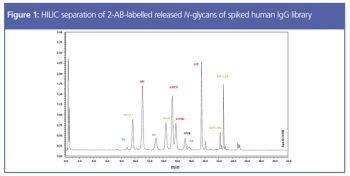
Post-translational modifications are potential critical quality attributes (pCQAs) routinely assessed in biotherapeutic development. Glycosylation is one of the most important attributes to assess because it affects protein function as well as antigen receptor binding. N-glycosylation of asparagine residues is the most common pCQA assessed during monoclonal antibody (mAb) therapeutic development. There are a few protocols to assess and quantitate N-glycans, but the most common approach is through an enzymatic release and labelling procedure, followed by separation and detection. This article demonstrates the method development considerations for sample preparation and chromatographic analysis of N-glycans of therapeutic mAbs.
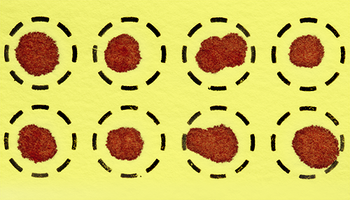
The dried blood spot (DBS) sampling technique has been around for decades, predominantly for small molecules and mainly in newborn screening. Although determination of proteins after DBS sampling is usually performed with immunometric assays, the combination with mass spectrometry (MS) is gaining interest. This article provides an overview of DBS sampling for mass spectrometry-based protein analysis. The first part will focus on clinical applications for DBSs and on sampling other biological matrices apart from whole blood, including dried matrix spots (DMSs). The second part will explore the new frontiers of the DBS sampling technology, including novel sampling materials/devices, and novel combinations with mass spectrometry. Examples of use in both qualitative and quantitative protein analysis are highlighted as well as examples using both bottom-up and top-down proteomics approaches.
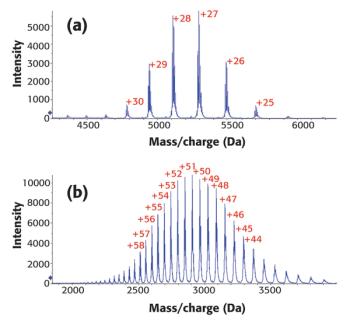
Size-exclusion chromatography (SEC), with the use of ammonium acetate buffer, can be coupled on-line to electrospray ionization MS for the characterization of size variants of therapeutic monoclonal antibodies (mAbs). A quadrupole time-of-flight (QTOF) MS system was employed, and the MS method was optimized to achieve favorable sensitivity for high-mass detection, while maintaining the structural integrity of the aggregates (or high molecular weight species) and fragments (or low molecular weight species).

How do I know when bioinert liquid chromatography columns, systems, or components are needed for my separations of biomolecules?

A top-down approach to quantifying intact proteins from biological fluids using liquid chromatography–triple quadrupole–mass spectrometry (LC–MS/MS) offers the potential for more absolute quantitation than bottom-up approaches. To make this broadly viable, however, commercial sample preparation tools are needed.
![[1].jpg](https://cdn.sanity.io/images/0vv8moc6/chroma/f970d09fd9a78d8d758b609bc5555ac0efcf1f2b-1000x228.jpg?w=350&fit=crop&auto=format)
A method was developed for the molecular weight characterization of heterogeneous polymer mixtures, such as heparins and glatiramer acetate, noting that single molecular structures are not adequate for creating a molecular weight calibration curve. That limitation is overcome in this work, which demonstrates method validation and application to process samples.

Advanced separation and mass spectrometry methods enable comprehensive profiling of the inherent glycan heterogeneities of protein therapeutics. In particular, reversed-phase HPLC–based multiattribute methods (MAMs) provide a wealth of information, and other techniques, such as HILIC and CE-MS, also continue to evolve.

